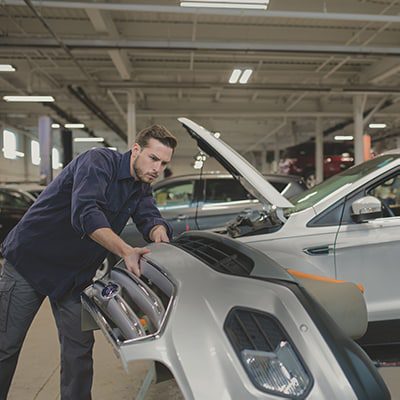In April 2020, traffic volumes across the US were reduced by 30 to 60 percent as COVID-19 restrictions kept much of the public at home. As a direct result, fewer collisions occurred nationwide. Los Angeles, for example, noted roughly a 50 percent decrease in collisions in April compared with last year, or roughly 15,000 less fender benders.
That’s great news for the general public, and LA also noted approximately 6,000 fewer injuries due to fewer collisions. But what’s happened is that collision repair facilities across the nation had a commensurate decrease in business.
But it’s not as it seems. The decrease is not fully due to collisions. In fact, only 1 in 9 repair orders is collision related.
Where Body Shop Revenue Comes From
According to 2019 NADA Data, dealership body shop sales accounted for $6.95 billion in the United States in 2019. Of the 9.5 million repair orders that make up that volume, only 1.17 million are collision related. Around one-third are internal work orders and over half are customer-pay.
The slow-down for dealership ‘collision centers’ was cumulative – a decline in business from sales shutdowns, shelter-in-place orders, and accidents combined.
Although the body shop is often seen as simply for collision repairs, most of the volume is from customers are internal work that aren’t directly tied to accidents. That’s where dealers have opportunities to build business up in the body shop.
Work for Upsells
Nationwide, body shops at franchised dealerships are almost always inundated with vehicles to complete. Upselling additional work has not been an option because time is always at a premium. With volume still light in the collision industry, it’s the perfect time to start selling additional work to customers.
What does upselling look like in the body shop? That all depends on what you’re set up to do. It may be selling and installing accessories like mud flaps and box liners or it could be detailing services or light mechanical work. With the time and manpower available, it’s an opportunity to increase revenue. 
Expand Your Scope of Practice
Methods exist to generate additional sales for the body shop in slow times. Most of these standalone services can also serve to reduce sublet costs in the future for better control of invoicing and time frames.
- Paintless dent repair (PDR) is an excellent way of reducing repair order times and improving customer satisfaction. A professional-grade kit could be a few thousand dollars but requires very little investment otherwise, aside from training.
- Acquire additional franchise opportunities for services like spray-in box liners. As an example, Line-X spray-in box liners can keep slow body shops a little busier while keeping profit for vehicle sales in-house.
Establish Targeted Marketing
Again, body shops at franchised dealers are often busy enough that marketing isn’t necessary. However, during COVID-19 recovery, unfilled space can be occupied by customers pulled from other stores.
Low-cost campaigns on social media generate traffic easily. A great idea for franchised dealers is to use geofencing campaigns to target customers at independent body shops as well as other same-franchise dealers. Anyone who is disloyal could potentially be your new customer.
Although collision repair and body shop departments are often viewed as necessary departments for dealerships, they should be expected to achieve results, even in COVID-19 – and it’s certainly possible to do so.
Did you enjoy this article from Jason Unrau? Read other articles from him here.


While you’re here, don’t forget to subscribe to our email newsletter for all the latest auto industry news from CBT News.








